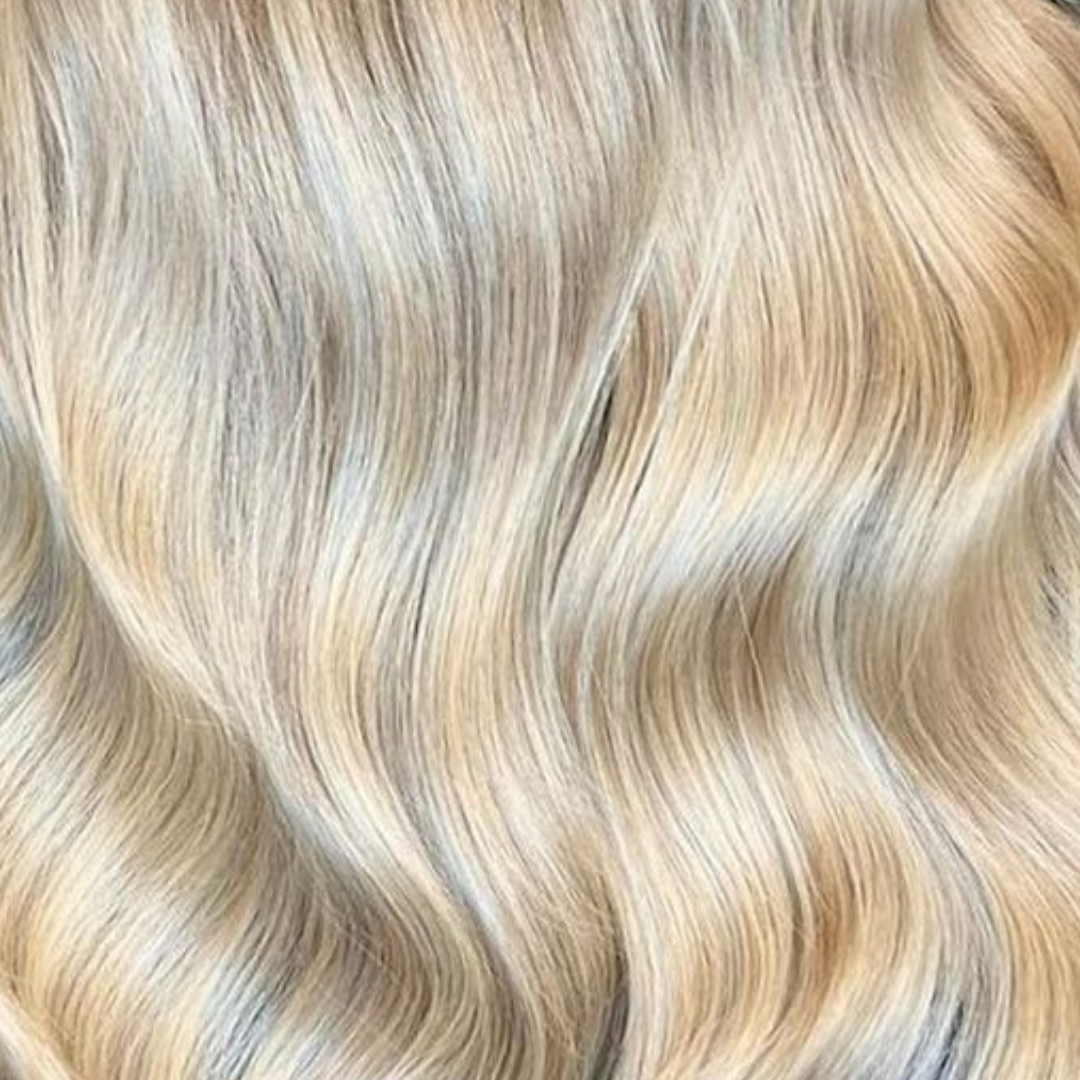Lightened, blonde, or grey hair often loses its brightness over time, developing unwanted yellow or brassy tones. Exposure to sunlight, heat styling, or chlorine can speed up this fading, making hair appear dull. One popular solution is the purple hair mask, but does it actually work? These masks help neutralise warm undertones and refresh the hair’s natural tone while adding much-needed moisture. With regular use, they can keep hair looking vibrant, soft, and easier to manage between washes.
Here’s how these treatments help restore cool, vibrant tones and keep hair looking healthy.
How Purple Hair Masks Work?
The secret behind a purple hair mask lies in colour theory. Purple and yellow sit opposite each other on the colour wheel, meaning purple pigments can neutralise yellow or warm undertones in light hair.
When applied, these pigments lightly deposit onto the hair’s surface, counteracting brassiness and helping to maintain the clarity of blonde, silver, or bleached shades.
The FUL Purple Intense Moisture Hair Mask uses this colour-correcting action alongside hydrating ingredients to tone and nourish the hair, leaving it soft, smooth, and refreshed after every use.
Why Choose a Purple Mask Over a Purple Shampoo?
While purple shampoos are great for quick toning, they are designed primarily to cleanse. A purple toning mask is more concentrated and stays on the hair longer, allowing pigments to work deeply while moisturising agents repair dryness caused by colouring, heat, or environmental exposure.
This combination of toning and conditioning helps to restore softness and shine while maintaining the desired cool shade. Masks are particularly helpful for those who find purple shampoos a little drying or need an extra boost between salon visits.

Step-by-Step Guide: Applying Your Purple Hair Mask
To get the most from your purple mask:
-
Wash your hair with a gentle shampoo to remove product buildup.
-
Apply the mask evenly to towel-dried hair.
-
Leave it on for 5–10 minutes, depending on how much toning your hair needs.
-
Rinse thoroughly and follow with your usual conditioner or styling routine.
For blonde, bleached, or grey hair, use once a week to maintain a clean, cool finish. Those who spend time in the sun or swim regularly may benefit from more frequent use to correct yellow tones and maintain vibrancy.
How to Get the Best Results
To make the most of your purple hair mask and maintain cool, vibrant tones, follow these key tips:
1. Choose the Right Product
Not all purple hair masks are the same. The intensity of the violet pigments, the quality of additional ingredients, and the overall formulation can vary between brands. Look for a mask that is hydrating, nourishing, and suitable for your hair type. FUL’s Purple Intense Moisture Hair Mask is a high-quality option known for its gentle yet effective toning and conditioning properties.
2. Use It Correctly
Always follow the instructions provided with your product. Most purple masks work best when applied to towel-dried hair and left on for 5–10 minutes. Leaving it on too long may result in a subtle purple tint, while too little time may not fully neutralise yellow or brassy tones.
3. Be Consistent
Purple hair masks are not a one-time fix. To maintain blonde, bleached, or silver hair, incorporate the mask into your weekly hair care routine. Regular use helps neutralise brassiness, refresh cool tones, and keep hair soft, manageable, and healthy between salon visits.
Are Purple Hair Masks Suitable for Everyone?
Purple masks are most effective on light-coloured or pre-lightened hair, including blonde, platinum, silver, and grey tones. While they will not visibly change darker hair colours, they can still offer conditioning benefits and help remove dull residue caused by styling products or pollution.
It’s important to follow instructions carefully, as leaving a purple mask on for too long can result in unwanted violet tints. Always start with a shorter processing time and adjust based on your hair’s tone and condition.
Final Thoughts
So, do purple hair masks really work? Yes, they offer an effective way to neutralise yellow undertones, restore cool brightness, and maintain healthy, hydrated hair between salon visits.
Bring back your colour’s clarity and shine with the FUL Purple Intense Moisture Hair Mask, your go-to treatment for vibrant, beautifully toned blonde and silver hair.
Shop our purple mask today and keep your colour looking salon-fresh at home.
Frequently Asked Questions
Does purple cancel out yellow?
Yes, purple pigments work to neutralise yellow and brassy tones in light-coloured hair. This is based on colour theory, where purple and yellow are opposite on the colour wheel, making purple masks effective at maintaining cooler, brighter shades.
How often should I use a purple hair mask?
For most blonde, lightened, or grey hair, using a purple hair mask once a week is enough to maintain cool tones and reduce brassy hues. If your hair is exposed to sun, chlorine, or frequent styling, you may use it twice a week, but avoid overuse to prevent unwanted purple tints.
Can purple masks damage my hair?
No, when used as directed, purple hair masks do not damage hair. Most masks also contain moisturizing ingredients that help strengthen and soften hair while toning it, making them safe for regular use on colour-treated or lightened hair.
Will a purple mask work on dark hair?
Purple masks are most effective on light-coloured or pre-lightened hair, such as blonde, grey, or platinum shades. On darker hair, the violet pigments are less visible, so the main benefit will be hydration and nourishment rather than colour correction.
How long should I leave a purple mask on my hair?
Most purple masks require 5–10 minutes to work effectively. Leaving it on longer may result in a subtle violet tint, so it’s best to follow the instructions on your specific product and adjust based on your hair’s tone and condition.
What happens if you put a purple hair mask on dry hair?
Applying a purple hair mask on dry hair can result in uneven colour distribution. Most masks are intended for towel-dried hair, which allows pigments to spread evenly while locking in moisture and avoiding patchy toning.

